Automotive
Electric vehicle weight poses threat to current road infrastructure, safety experts warn
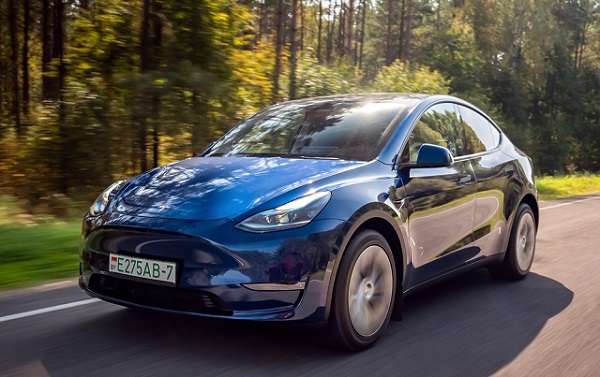
Tesla Model Y
From LifeSiteNews
By Bob Unruh
A report in the Washington Times explains that electric vehicles (EVs) can weigh up to 50 percent more than internal combustion motor vehicles. That extra weight could more easily damage roads, bridges, and parking garages.
If all of the existing headaches for those pushing expensive electric vehicles on resisting American consumers could vanish, there’s still a big one that may have no ready solution.
Already, it appears the U.S. could end up dependent on unfriendly nations for materials for all those batteries. Then there’s the fact that the nation’s grid simply can’t support all that recharging – California already has been sending out advisories for owners not to charge. And then there’s the limited range, extended recharging times, both worsened by bad weather.
But now a report in the Washington Times explains that those batteries are heavy, and EVs can weigh up to 50 percent more than internal combustion motor vehicles.
And that weight damages roads, bridges and parking garages, with those vehicles easily plowing through safety guardrails while posing a higher danger to other drivers, pedestrians and bicyclists traveling the same routes.
“The problems associated with EVs are poised to grow as more consumers purchase the cars under the Biden administration’s plan to eliminate gas-powered vehicles and the tailpipe emissions that come with them,” the report explained.
It explained engineers writing recently for Structure Magazine suggested construction companies, and building codes, need to make accommodation for the higher weight.
Parking garages, they said, should be redesigned to hold more weight.
That’s because some hold hundreds of vehicles, and just one EV. A Ford truck, weighs in at 8,240 pounds, nearly a ton (about 1,000 kg) more than the gas-powered version of the same pickup.
“Significantly increasing passenger vehicle weights combined with recently reduced structural design requirements will result in reduced factors of safety and increased maintenance and repair costs for parking structures,” the engineers wrote. “There are many cases of parking structure failures, and the growing demand for EVs will only increase the probability of failure.”
Then there are those guardrails, installed to minimize damage when traffic goes awry.
They are installed between lanes for traffic moving opposite directions, between lanes and edge drop-offs and more.
That concern comes out of a procedure at a test facility in Nebraska, where examiners took a 3.6-ton Rivian R1 and sent it into a metal guardrail at 62 mph, first head-on, then at an angle.
Both times it “ripped through” the guardrail and continued into what would have been lanes for oncoming traffic, the report revealed.
The conclusion was simple: making vehicles much heavier means “a lot more force” is required to redirect the vehicle.
University of Nebraska professor Cody Stolle, told the Times, “We found these guardrail systems don’t have great compatibility with these [electric] vehicles yet.”
The heavier vehicles also could cause more damage to other vehicles in collisions.
The report said an insurance institute expert confirmed the weight provides more protection to those inside the EV, but at the expense of anyone in another vehicle involved in an accident.
Joe Biden has insisted over and over that consumers should be buying the much more expensive and often less reliable electric cars the government programs subsidize.
The weight differences are significant. The report said the Tesla Model Y is more than 4,400 pounds while the similar size gas-powered Honda Accord is 3,300. Kia makes multiple SUVs, with the gas model weighting 3,900 pounds and the EV unit nearly 6,500.
Residential roads already are not engineered to handle the heavy weight on highways, and the lifespan of bridges could be reduced with much heavier traffic, the report said.
Sen. Marco Rubio, R-Fla., recently said, “EVs are typically much heavier compared to similarly sized, gas-powered vehicles, which will put additional strain on America’s transportation infrastructure. The American Society of Civil Engineers warns that an increase in EVs could substantially reduce the lifespan of roads and bridges, necessitating further investment in infrastructure.”
Reprinted with permission from the WND News Center.
Automotive
Major automakers push congress to block California’s 2035 EV mandate
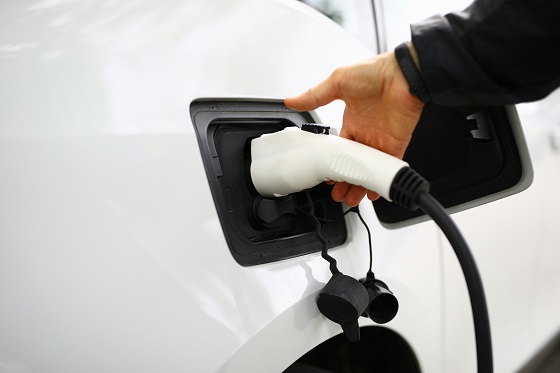
 MxM News
MxM News
Quick Hit:
Major automakers are urging Congress to intervene and halt California’s aggressive plan to eliminate gasoline-only vehicles by 2035. With the Biden-era EPA waiver empowering California and 11 other states to enforce the rule, automakers warn of immediate impacts on vehicle availability and consumer choice. The U.S. House is preparing for a critical vote to determine if California’s sweeping environmental mandates will stand.
Key Details:
-
Automakers argue California’s rules will raise prices and limit consumer choices, especially amid high tariffs on auto imports.
-
The House is set to vote this week on repealing the EPA waiver that greenlit California’s mandate.
-
California’s regulations would require 35% of 2026 model year vehicles to be zero-emission, a figure manufacturers say is unrealistic.
Diving Deeper:
The Alliance for Automotive Innovation, representing industry giants such as General Motors, Toyota, Volkswagen, and Hyundai, issued a letter Monday warning Congress about the looming consequences of California’s radical environmental regulations. The automakers stressed that unless Congress acts swiftly, vehicle shipments across the country could be disrupted within months, forcing car companies to artificially limit sales of traditional vehicles to meet electric vehicle quotas.
California’s Air Resources Board rules have already spread to 11 other states—including New York, Massachusetts, and Oregon—together representing roughly 40% of the entire U.S. auto market. Despite repeated concerns from manufacturers, California officials have doubled down, insisting that their measures are essential for meeting lofty greenhouse gas reduction targets and combating smog. However, even some states like Maryland have recognized the impracticality of California’s timeline, opting to delay compliance.
A major legal hurdle complicates the path forward. The Government Accountability Office ruled in March that the EPA waiver issued under former President Joe Biden cannot be revoked under the Congressional Review Act, which requires only a simple Senate majority. This creates uncertainty over whether Congress can truly roll back California’s authority without more complex legislative action.
The House is also gearing up to tackle other elements of California’s environmental regime, including blocking the state from imposing stricter pollution standards on commercial trucks and halting its low-nitrogen oxide emissions regulations for heavy-duty vehicles. These moves reflect growing concerns that California’s progressive regulatory overreach is threatening national commerce and consumer choice.
Under California’s current rules, the state demands that 35% of light-duty vehicles for the 2026 model year be zero-emission, scaling up rapidly to 68% by 2030. Industry experts widely agree that these targets are disconnected from reality, given the current slow pace of electric vehicle adoption among the broader American public, particularly in rural and lower-income areas.
California first unveiled its plan in 2020, aiming to make at least 80% of new cars electric and the remainder plug-in hybrids by 2035. Now, under President Donald Trump’s leadership, the U.S. Transportation Department is working to undo the aggressive fuel economy regulations imposed during former President Joe Biden’s term, offering a much-needed course correction for an auto industry burdened by regulatory overreach.
As Congress debates, the larger question remains: Will America allow one state’s left-wing environmental ideology to dictate terms for the entire country’s auto industry?
Also Interesting
Top Used Ford SUVs for Families and Adventurers
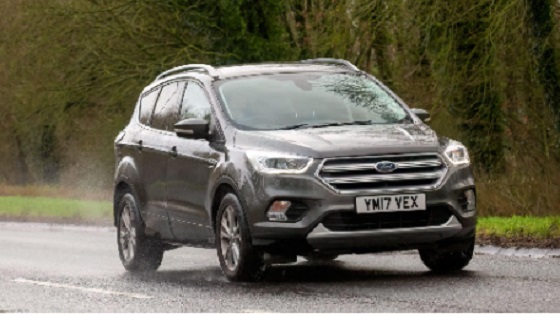
Finding the perfect SUV that balances comfort, safety, and adventure-ready performance can be a challenge, but Ford’s lineup of used SUVs offers some of the best options available. Whether you need a spacious vehicle for your growing family or an all-terrain companion for weekend getaways, there’s a Ford SUV to match your lifestyle. Let’s explore the top choices that deliver reliability, versatility, and affordability.
What to Look for in a Used Ford SUV?
Before diving into specific models, it’s essential to know what features matter most when shopping for a used Ford SUV. Here are key factors to consider:
● Safety Features – Look for models equipped with Ford Co-Pilot360, which includes automatic emergency braking, blind-spot monitoring, and adaptive cruise control.
● Reliability and Maintenance Costs – Research common issues and ensure the SUV has a solid maintenance history.
● Fuel Efficiency – Choose a model that aligns with your commuting or road trip needs.
● Cargo and Passenger Space – Ensure the SUV has enough room for your family, gear, and pets.
● Off-Road Capability – If adventure is your goal, opt for models with all-wheel drive (AWD) or four-wheel drive (4WD).
If you’re ready to explore available options, check out https://stampedeauto.com/used-ford/ for a selection of quality used Ford SUVs.
1. Ford Escape – The Compact Family Favorite
The Ford Escape is a practical, fuel-efficient SUV perfect for small families and urban explorers. With a history of strong safety ratings and a spacious interior, it strikes a balance between convenience and performance.
Why Choose a Used Ford Escape?
● Fuel Efficiency – Older models with the 1.5L EcoBoost engine offer up to 30 MPG highway.
● User-Friendly Technology – Equipped with Ford SYNC infotainment and smartphone connectivity.
● Versatile Cargo Space – Fold-flat rear seats provide ample room for groceries, sports equipment, or luggage.
● Best Model Years to Buy – 2018-2021 models have modern safety features and improved fuel economy.
2. Ford Edge – The Perfect Mid-Size Balance
For those who want more space without stepping into full-size territory, the Ford Edge is an ideal midsize SUV. It offers a roomy two-row layout, strong engine options, and a smooth ride.
Why Choose a Used Ford Edge?
● Spacious Cabin – More rear legroom than many competitors.
● Powerful Engine Choices – Available 2.0L EcoBoost and 2.7L V6 for extra performance.
● Advanced Safety Features – Includes lane-keeping assist and pre-collision assist in newer models.
● Best Model Years to Buy – 2019-2022 models offer a modern design and strong reliability.
3. Ford Explorer – The Ultimate Family SUV

If you need three rows of seating without sacrificing performance, the Ford Explorer is a top contender. It’s an excellent SUV for large families and those who need extra passenger capacity.
Why Choose a Used Ford Explorer?
● Seating for Up to Seven – Third-row seats offer flexibility for larger families.
● Strong Towing Capacity – Can tow up to 5,000 lbs when properly equipped.
● Powerful Yet Efficient – The 2.3L EcoBoost engine delivers a balance of power and fuel savings.
● Best Model Years to Buy – 2017-2022 models feature advanced driver assistance and improved comfort.
4. Ford Expedition – The Full-Size Powerhouse
For those who need maximum space and towing capability, the Ford Expedition is a standout choice. It’s built for large families, cross-country road trips, and hauling heavy loads.
Why Choose a Used Ford Expedition?
● Room for Eight – A full-size SUV with unmatched passenger space.
● Towing King – Can tow up to 9,300 lbs, ideal for boats and trailers.
● High-Tech Features – SYNC 3 infotainment and multiple USB ports keep everyone connected.
● Best Model Years to Buy – 2018-2022 models have turbocharged efficiency and refined interiors.
5. Ford Bronco Sport – The Adventurer’s Compact Choice
For outdoor enthusiasts, the Ford Bronco Sport is a rugged compact SUV designed for off-road fun while still being a practical daily driver.
Why Choose a Used Ford Bronco Sport?
● Trail-Ready Performance – Standard AWD and off-road modes for different terrains.
● Compact Yet Spacious – Clever storage solutions for camping and gear.
● Turbocharged Engines – 1.5L and 2.0L EcoBoost options for strong performance.
● Best Model Years to Buy – 2021-2023 models provide the latest tech and rugged styling.
Before purchasing a used Ford Bronco Sport, be sure to check for any recalls. For example, certain Ford Bronco Sport and Maverick models have been recalled to fix faulty batteries. To learn more about this, visit Consumer Reports’ coverage on the recall.
Buying Tips: How to Get the Best Deal on a Used Ford SUV
● Certified Pre-Owned (CPO) Options – Ford’s CPO program includes extended warranties and inspections.
● Check Vehicle History Reports – Avoid SUVs with major accidents or unresolved recalls.
● Test Drive and Inspection – Always inspect brakes, transmission, and suspension.
● Compare Prices – Look at local dealerships and online marketplaces for the best deals.
● Negotiate Smartly – Research market value and be prepared to walk away if needed. It also helps to choose a used car dealer with transparent pricing and a solid reputation.
Conclusion
Choosing the right used Ford SUV depends on your specific needs. If you want fuel efficiency and city-friendly size, the Escape is a great choice. For those needing extra space and towing power, the Explorer or Expedition are top contenders. If adventure is a priority, the Bronco Sport
offers unbeatable off-road capability.
No matter which Ford SUV you choose, you’ll get a reliable vehicle that blends comfort, technology, and performance—without the high price tag of a new model. Start your search today and find the perfect used Ford SUV for your family or next adventure.
-

 Media2 days ago
Media2 days agoCBC retracts false claims about residential schools after accusing Rebel News of ‘misinformation’
-

 Bjorn Lomborg2 days ago
Bjorn Lomborg2 days agoNet zero’s cost-benefit ratio is CRAZY high
-

 2025 Federal Election2 days ago
2025 Federal Election2 days agoMark Carney Wants You to Forget He Clearly Opposes the Development and Export of Canada’s Natural Resources
-

 2025 Federal Election2 days ago
2025 Federal Election2 days agoPolice Associations Endorse Conservatives. Poilievre Will Shut Down Tent Cities
-

 2025 Federal Election2 days ago
2025 Federal Election2 days agoCarney’s Hidden Climate Finance Agenda
-

 2025 Federal Election2 days ago
2025 Federal Election2 days agoPolls say Canadians will give Trump what he wants, a Carney victory.
-
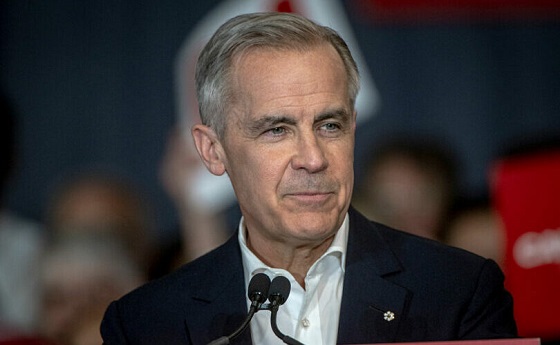
 2025 Federal Election2 days ago
2025 Federal Election2 days agoColumnist warns Carney Liberals will consider a home equity tax on primary residences
-
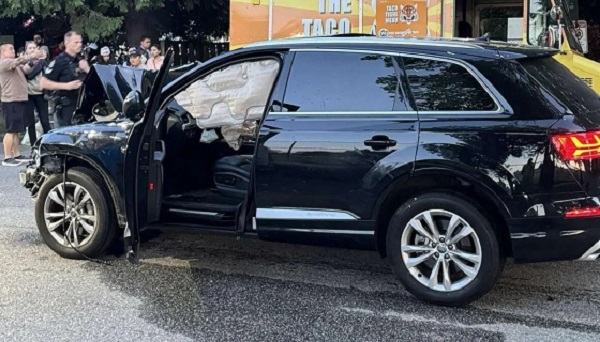
 2025 Federal Election2 days ago
2025 Federal Election2 days agoNine Dead After SUV Plows Into Vancouver Festival Crowd, Raising Election-Eve Concerns Over Public Safety




